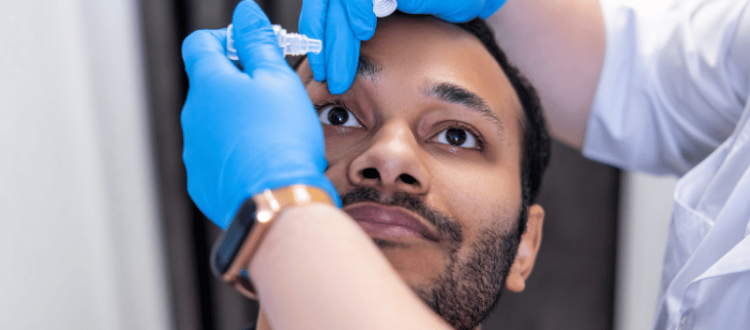OHSU and SPH Researchers Discover Link Between Proteins In Tears, Pain After Eye Surgery
Each year, more than 800,000 Americans undergo refractive surgery like LASIK and PRK to correct their vision. While these procedures generally have a high rate of success, a small number of people continue to feel pain or discomfort long after the surgery.
In a new study published in the Journal of Proteome Research, Oregon Health & Science University researchers discovered a connection between levels of certain proteins found in patients’ tears and persistent pain months after surgery. The team hopes their findings could eventually help in the development of new screening tools and treatments for patients.
Revealing protein patterns
The team recruited 120 study participants in Miami and Portland. None reported any eye pain before refractive surgery.
Three months after surgery, researchers took tear samples using a thin filter paper inserted beneath the lower eyelid to wick tears from the eye surface. This non-invasive procedure is used clinically for other diagnoses, such as assessing dry eye disease.
From the group of participants, 16 reported they still had pain. Researchers compared these participants’ tears with those of 32 participants who had no pain and identified 2,748 proteins in tears from both groups of participants.
When they compared protein profiles among the two groups, they found that some proteins differed in people who experienced long-term pain compared with those who did not. Additionally, researchers found patterns of protein differences mattered: Looking at three or four proteins together was better at predicting pain than a single protein.
The bioinformatics team, led by Jodi Lapidus, Ph.D., and Siting Chen, M.P.H., of the OHSU-PSU School of Public Health, used statistical tools to test if specific proteins or groups of proteins could predict whether eye-surgery patients would have long-term pain. Researchers say these protein patterns might one day help assess the risk of post-surgical eye pain in patients.

